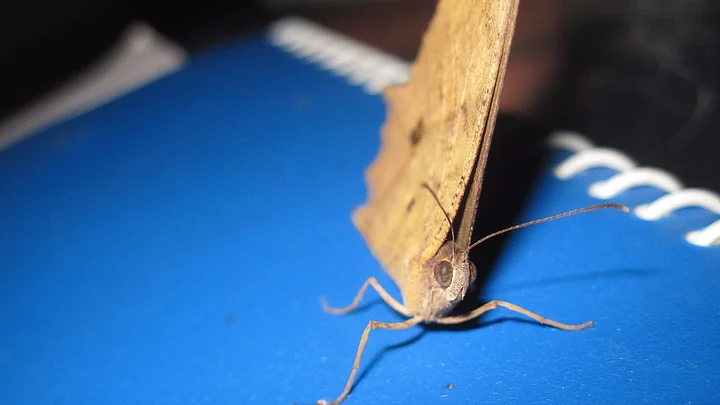If you’re living in Kolkata, you may have noticed a prominent guest in many homes this winter. The small, four-winged creatures crowd together near ceilings and walls, and even outdoors, in buses, trams, clubs and gyms.
This uninvited guest is the common evening brown butterfly, or if we want to get all scientific, Melanitis Ieda. And its surprise appearance has left many of us confused. So let’s take a look at what this means.
Butterflies tend to have specific seasons, like summer or winter, says Arjan Basu Roy, a lepidopterist (someone who studies butterflies) and secretary of Nature Mates, a Kolkata-based nature organisation.
In the case of the common evening brown butterfly, winter is its peak season. During the summer, a very small population remains, though factors like length of the day, amount of light, temperature, humidity and rainfall affect its appearance.
The butterfly is usually active around dusk, and known to operate better in low light. As winter days become shorter, and the sunlight dims, the butterfly emerges.
But Why The Sudden Invasion?
Though we can see this butterfly every winter, the scale at which the common evening brown butterfly has appeared this year seems unprecedented in popular memory.
It turns out rapid urbanisation may have played a role in this change.
Though most species of butterflies can see best during the daytime, the common evening brown variety works best in low-light conditions. They may be attracted to the tubelights and bulbs inside our homes.
These butterflies may also be drawn to any food or waste we have around the house. The common evening brown thrives on fluids in organic waste such as dead insects, rotting kitchen waste, and sewage waste — which might be abundant around our homes if waste disposal is poorly managed.
Experts also say climate change may have an impact, but establishing this link would require more extensive study. While there are different opinions on this, Basu Roy says any such conclusions relating to the complex issue of climate change are unknown at this stage and that such ‘mass-emergences’ “take place after every six or seven years”.
And the common evening brown isn’t the first species to suddenly appear en masse in winter. Last year, the peacock pansy, or the Junonia Almanac, could be spotted around Kolkata. The peackock pansy is primarily an outdoors and daytime butterfly, which prefers fresh nectar as food.
Have you seen these butterflies hanging around? If so, send in images @TheQuint.
(Surjodeb Basu is an independent writer based in Kolkata. This is a personal blog and the views expressed above are the author’s own. The Quint neither endorses nor is responsible for the same.)
(At The Quint, we question everything. Play an active role in shaping our journalism by becoming a member today.)
